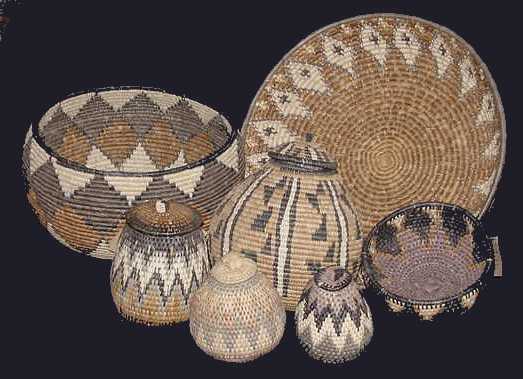Traditional
African Zulu Illala Palm Baskets
The Zulus
are the largest tribe in South Africa, renowned for their basketry,
artistry and craftsmanship. Many women make beautiful baskets using
traditional art forms in order to supplement their incomes. For many
this is their only means of support. Women work in their homes,
assimilating basket weaving into their normal routines permitting them
to raise their children, work in the fields, collect water or do other
daily chores. Indigenous raw materials are used in making these
hand-woven baskets. It can take up to a month to produce a medium-sized
basket with its own unique size, shape and design. Each piece is a true
collector's item.
Each of these baskets is one of a kind and you will receive the piece pictured. After you place a basket in your shopping cart, it will be removed from inventory. If you look in your shopping basket (link at the top "basket contents"), you should see it there.

Please use
the links on the left to view our selection of these handmade baskets.
Traditional
Symbols Used in Zulu Baskets
|
Diamond
|
Female
|
|
Triangle
|
Male
|
2
Diamonds
(one above the other)
|
Married
Woman
|
2
Triangles
(forming an hourglass)
|
Married
Man
|
|
*Zig
Zags
|
A Male
Basket
("Assegais of Shaka")
|
|
*Diamond
Variations
|
A
Feminine Basket
("Shields of Shaka")
|
*These
symbols are often combined
for family baskets. Frequently each family member will have their own
basket.
Family baskets are commonly used to store dried goods (i.e., nuts,
beans,
herbs, etc.).
Common
Colors Used in Zulu Baskets
| Brown
(Ububende) |
Palm leaves
are kept in muddy soil for
up to a week |
| Khaki
Green & Khaki Brown (Mxuba) |
Palm leaves
are soaked and boiled in a
mixture of cow dung and water |
| Black
(Omniyama) |
Palm leaves
are first precolored in river
mud and then boiled for 8 hours in a leaf and water mixture from the
Umbuque
tree. |
| Lilac
(Ubukhwebezane) |
Palm leaves
are boiled in a mixture of
crushed shrub leaves and water. |
| Pale Red
(Bomvu) |
Palm leaves
are boiled for 2 days in a
mixture of crushed Tal shrub leaves and water. |








































